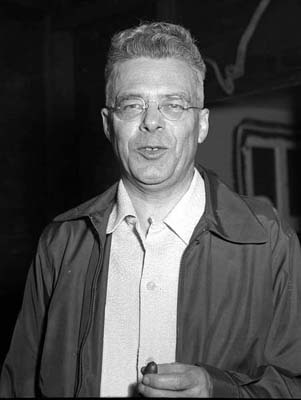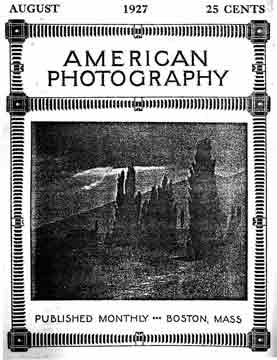
A COLLEGE OF PHOTOGRAPHIC TECHNOLOGY
C. B. NEBLETTE, A.R.P.S.
Department of Photography, A.M. College of Texas

 he history
of photography since the advent of the daguerreotype has
been one of continuous development, not only in its processes but also
in its applications to science and industry. Each year has seen one or
more new and valuable applications of photography to some branch of
technology until now there is not a single important branch of science
in which photography does not play a part.
he history
of photography since the advent of the daguerreotype has
been one of continuous development, not only in its processes but also
in its applications to science and industry. Each year has seen one or
more new and valuable applications of photography to some branch of
technology until now there is not a single important branch of science
in which photography does not play a part.The history of photography in astronomy is practically a record of astronomical progress for the last quarter of a century. From metallurgy and the study of metals and their application to engineering, photography, in conjunction with the microscope, has proved of incalculable value. Aerial photography, a new field but a rapidly developing one, has shown that its many peace-time uses are no less important than its services in time of war. The remarkable progress which has been made in industrial spectroscopy in the past few years has been due very largely to the use of photography, by means of which a permanent record is made for comparison with other batches of material at future dates. X-ray photography has almost revolutionized surgery and dentistry and the X-ray examination of metals is developing into an important field. And so the story might be continued.
However, despite this record of achievement there is not, to the knowledge of the writer, a single comprehensive and authoritative course in either the science or the practice of photography in any university or technical institution in America. A survey of some two hundred and fifty universities and colleges made by the writer last year revealed the fact that but twenty offer any instruction in photography whatever. These courses, two institutions excepted, are what may be termed “scratch” courses of a semester or less, following no definite plan and of an elementary nature. The two exceptions to be noted are the Oregon State College and Massachusetts Institute of Technology. Encouraging progress can be reported from Oregon where the Department of Physics is conducting no less than seven separate courses in photography, constituting the most extensive work in the subject offered by any educational institution in America. At Massachusetts Tech., the course, as yet, covers only one semester, but it is much more complete and of a much higher standard than that given elsewhere.
There are several trade schools which are excellent in their way, but the work which they are able to offer is not as thorough nor as comprehensive as might be wished. Private enterprise, however willing it may be, is unequal to the task of establishing and maintaining an institution of the scope and character necessary for adequate and comprehensive instruction of college standard in all of the various branches of modern photography.
Apprenticeship methods of training served well enough when the field of photography was less varied and the demands less exacting than now, but the time for reliance upon such training is now past. The importance of photography in modern life is sufficient to justify the establishment and maintenance of an institution of college standard to which interested men and women may go for through training in pure and applied photography. No other branch of technology which is of equal service to man is without at least one such institution, somewhere, in some university or college and there are numerous fields of applied science, not one whit more important to the welfare and progress of humanity, that possess well-appointed colleges or departments in many of our largest universities. It is high time that we cease dependence upon chance development for the men who are to determine the future progress of photography. Germany and Austria have long had schools in which men might receive adequate training in the science and practice of photography, and only recently France has made a beginning in the same direction, while we on this side with the largest single photographic industry in the world, with a motion-picture industry having assets of over $1,500,000,000, with a photoengraving industry doing an annual business of over $50,000,000 a year, with an industrial wealth surpassing that of any other country, have no place in even one of our universities or technical institutions for a branch of technology which has done, in the last quarter of a century, at least as much for the dissemination of knowledge and the welfare and progress of humanity as any other single agency -~ the printing press alone excepted.
There should exist at some recognized university a college of photographic technology equal in its physical plant and equipment, in its faculty, in its organization, in its course of study and educational standards to that of any other college which forms a part of the institution. It should contain laboratories and equipment for efficient instruction in the science of photography, in portrait and commercial photography, in advertising photography, in X-ray photography as applied to surgery, dentistry and engineering, in motion picture photography, in photoengraving and in photomicrography as applied to the study of metals, in chemistry and in biology. Its four years of work should be of college grade and lead to a B. S. degree. Its faculty should be composed of able men of thorough training and ample experience in their own lines. Its students should be chosen with the same care and the standard necessary for graduation the same as for any other part of the university.
In this way, and in this way only, can be developed the body of intelligent, capable and trained workers and the specialists which are essential to the future of the profession. So long as we place our dependence upon chance development of men, the profession will number among its members a large number of drifters, who simply drifted into the profession as a means of eking out an existence and who without adequate training lower the standard of the entire profession. It is impossible to legislate the drifter, the uneducated, the untrained man out of the profession, but he can be crowded out in the course of time by the development of numbers of trained men who will so advance the status of the profession that the untrained man will no longer find it profitable to remain in the field.
An institution which is to do these things efficiently cannot well exist by itself. No separate and independent college of photographic technology can well provide for all of the varied demands which must be met if the institution is to be of the greatest service. Nor will such an institution be able to maintain the prestige and outlook of an educational institution of its standing. The college of photographic technology must form a part of an established university. Its presence in a larger whole such as that of a modern university will enlarge, not restrict, the character and range of its services, while its connection with the university will give it a standing which will be of inestimable benefit to itself and to the profession. Furthermore, the student of photography requires a thorough basic training in chemistry and physics and, if he is to follow portrait or pictorial photography, a background of art trainin g is advisable, while if he is to specialize in advertising photography he would need, in addition to a general study of photography and the principles of composition, a knowledge of the aims and methods of modern advertising.
These are subjects which can be most efficiently given by the other departments of the university. To attempt the correlation of such subjects with the other activities of a college of photographic technology existing alone would be highly difficult, if not impossible. Certainly it would involve a considerable outlay which would be avoided if the college was a part of, and in co-operation with, an established university.
Some of the ways in which such an institution would be of service to the science have already been touched upon. Its principal service would of course be in the development of bodies of trained men capable of rendering eflicient service in the various branches of photography, thus removing forever absolute dependence upon unskilled and imperfectly trained men. This alone would justify its establishment and maintenance. But in addition to this, the faculty, advanced students and students persuing graduate work might reasonably be expected to undertake original work dealing not only with the theory of photography but also with applied photography. At present but little concerted work is being done in this latter field, which is one of the greatest importance to science and industry.
Finally, who is to support such an institution? Who is to provide the funds necessary to make such an institution a reality? The photographic industry should contribute both to its establishment and maintenance, for it should be quite evident that such a college would have a marked influence on the future progress of photography and whatever assists in the progress of the science reacts in favor of the manufacturers of photographic materials. The motion picture industry would be one of the greatest beneficiaries of such an institution and might well be expected to provide in part for its maintenance.
Some suggestions have been made by men of importance in this industry that it establish an institution such as we have described, but devoted wholly to the needs of the industry. The college of photographic technology which we have described could serve the motion picture industry as well, if not better, than that which they have in mind, while its broader sphere would be of immense importance to the other branches of the science, hence there is no valid reason why the motion picture industry should not support the project. The photoengravers should be interested in the project as there are now only two trade schools for the training of men in a field in which there are more than ten thousand men employed and with an annual product valued at $50,000,000. The portrait and commercial workers should also support the institution which more than any one agency could be instrumental in raising the status of the profession, but owing to the more or less imperfect organization of this field it is not likely that much financial assistance could be secured from this branch of the profession for the establishment of such an institution. While it is quite true that a large number of forward-looking men in the portrait or commercial business would be vitally interested in the institution and be willing to assist in every possible way towards its development, it is unlikely that the body of workers in this field could be sufficieutly interested to raise any considerable amount towards its establishment. Many an educational institution in America owes its existence to philanthropy and there is no reason why such an institution as this, once established, would not be the recipient of financial assistance from men of wealth interested in the progress of photography and in its assistance to the various industries of the land.
Although the services which a college of photographic technology could render the science are more or less realized, there has been, up to the present time, no concerted movement on the part of the various branches of photographic workers towards the establishment of such an institution as has been described in this paper. It has been the purpose of the writer in this paper to bring this matter before the photographic world in the hope that interest may be aroused in the project which may eventually lead to the establishment of the
College
of Photographic Technology.